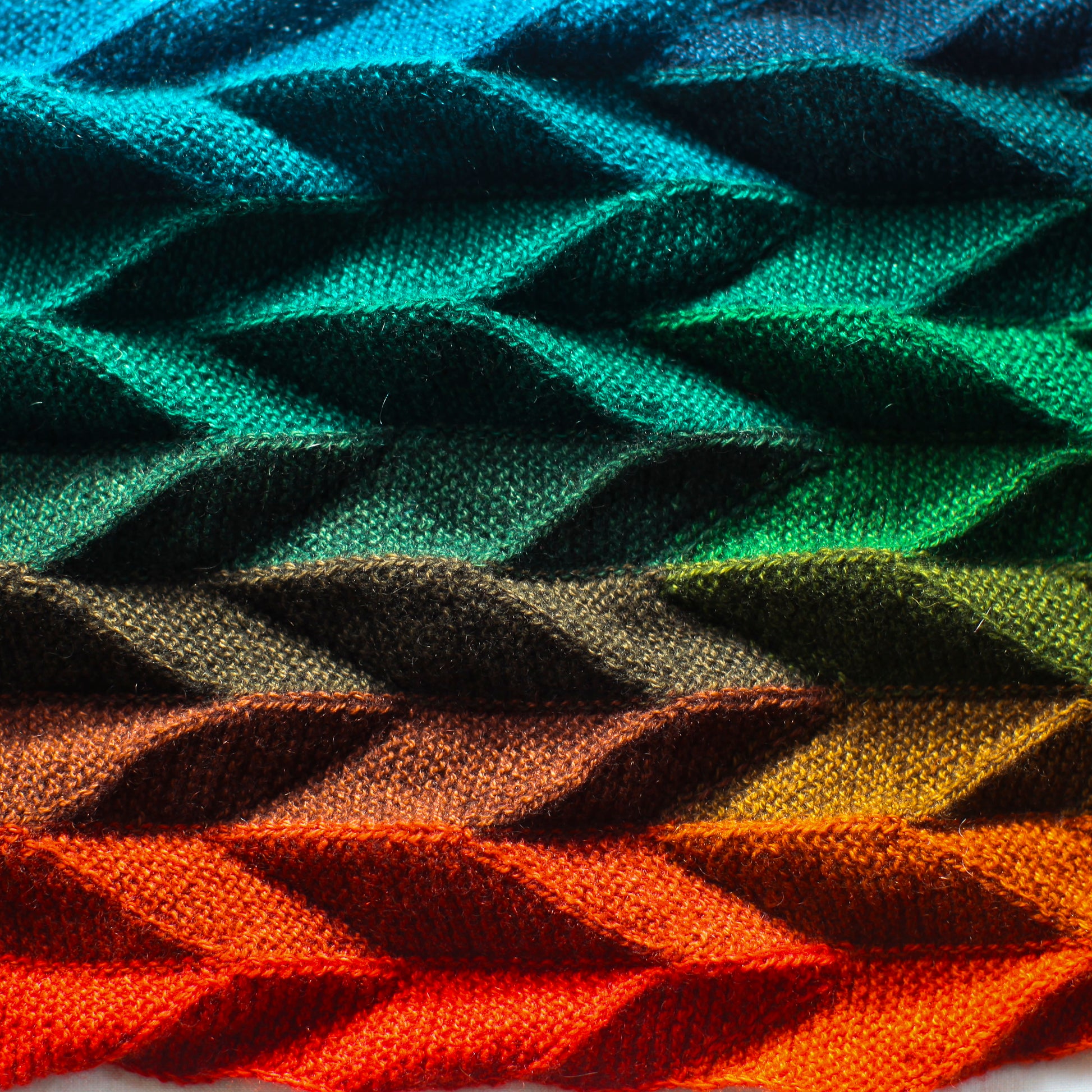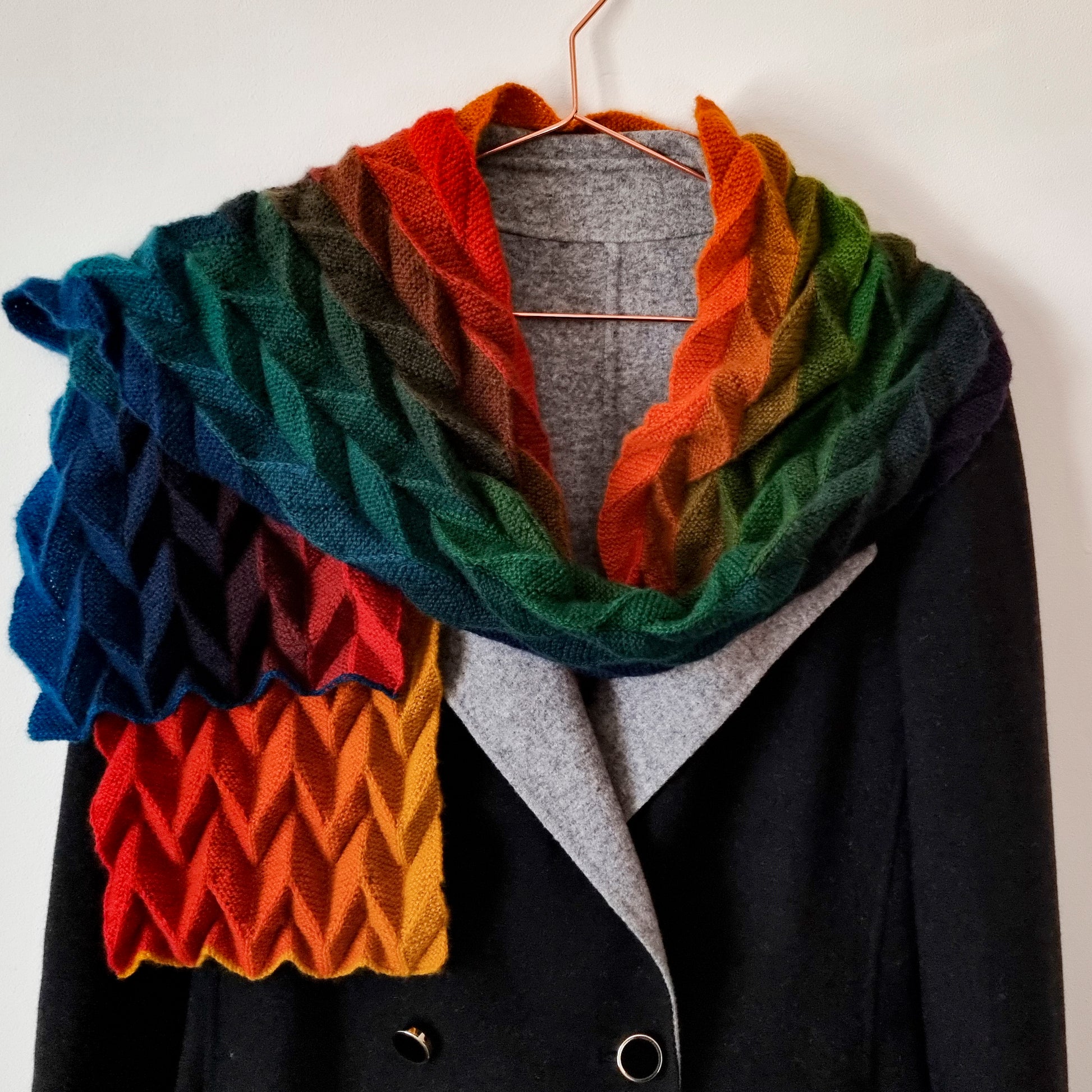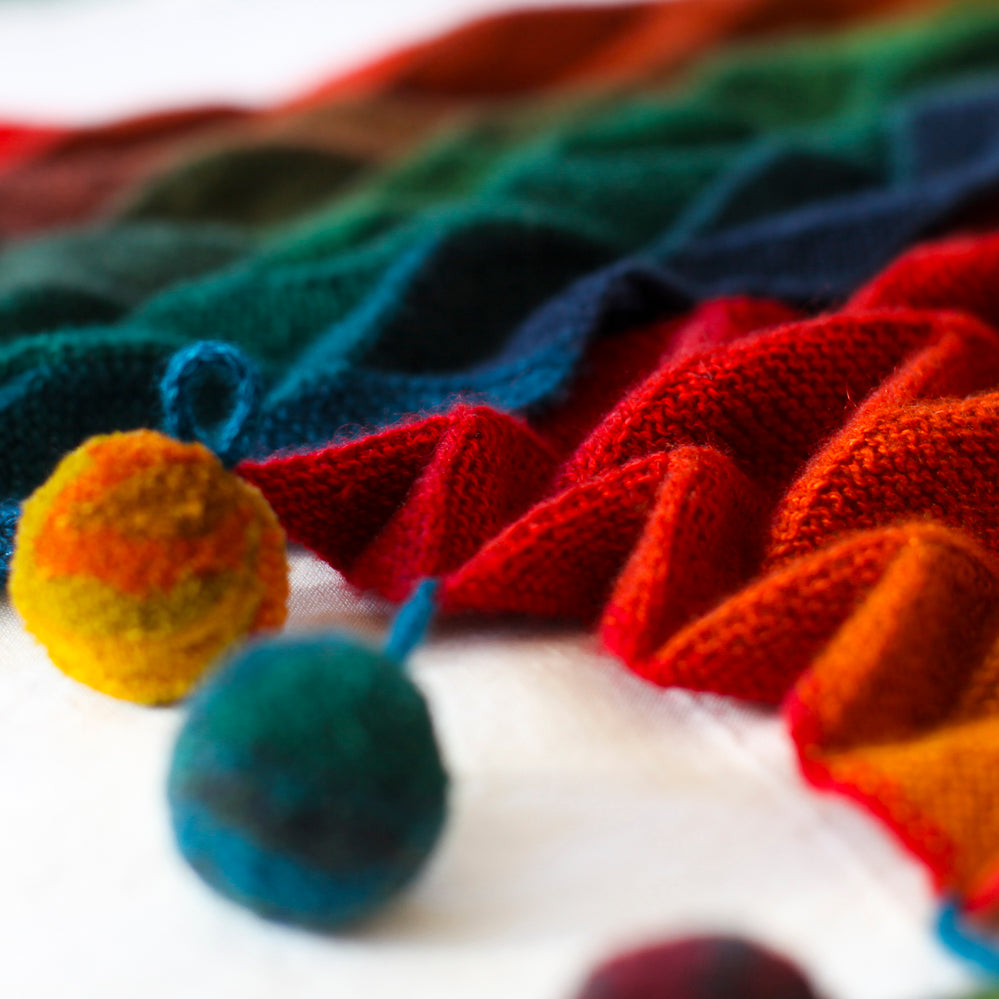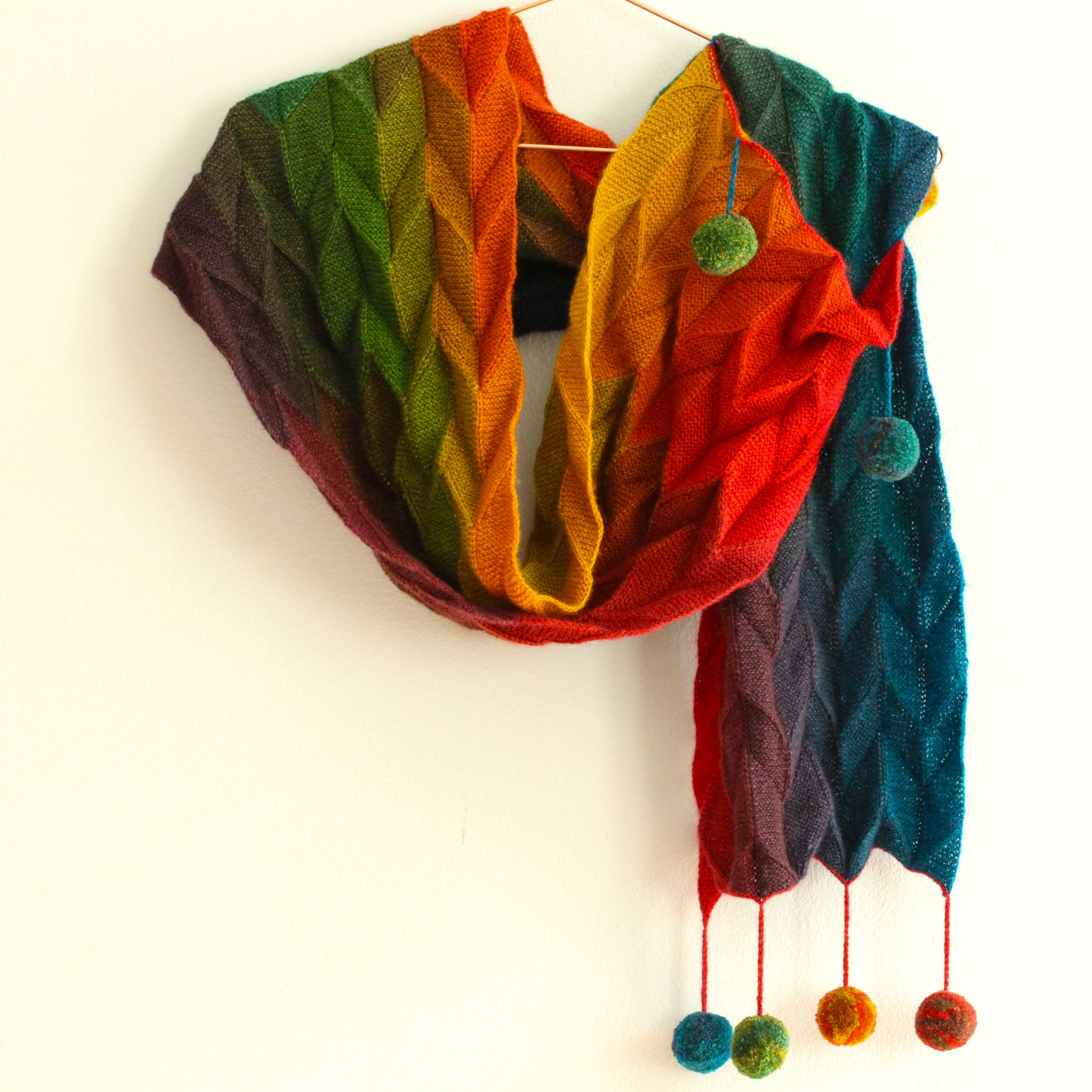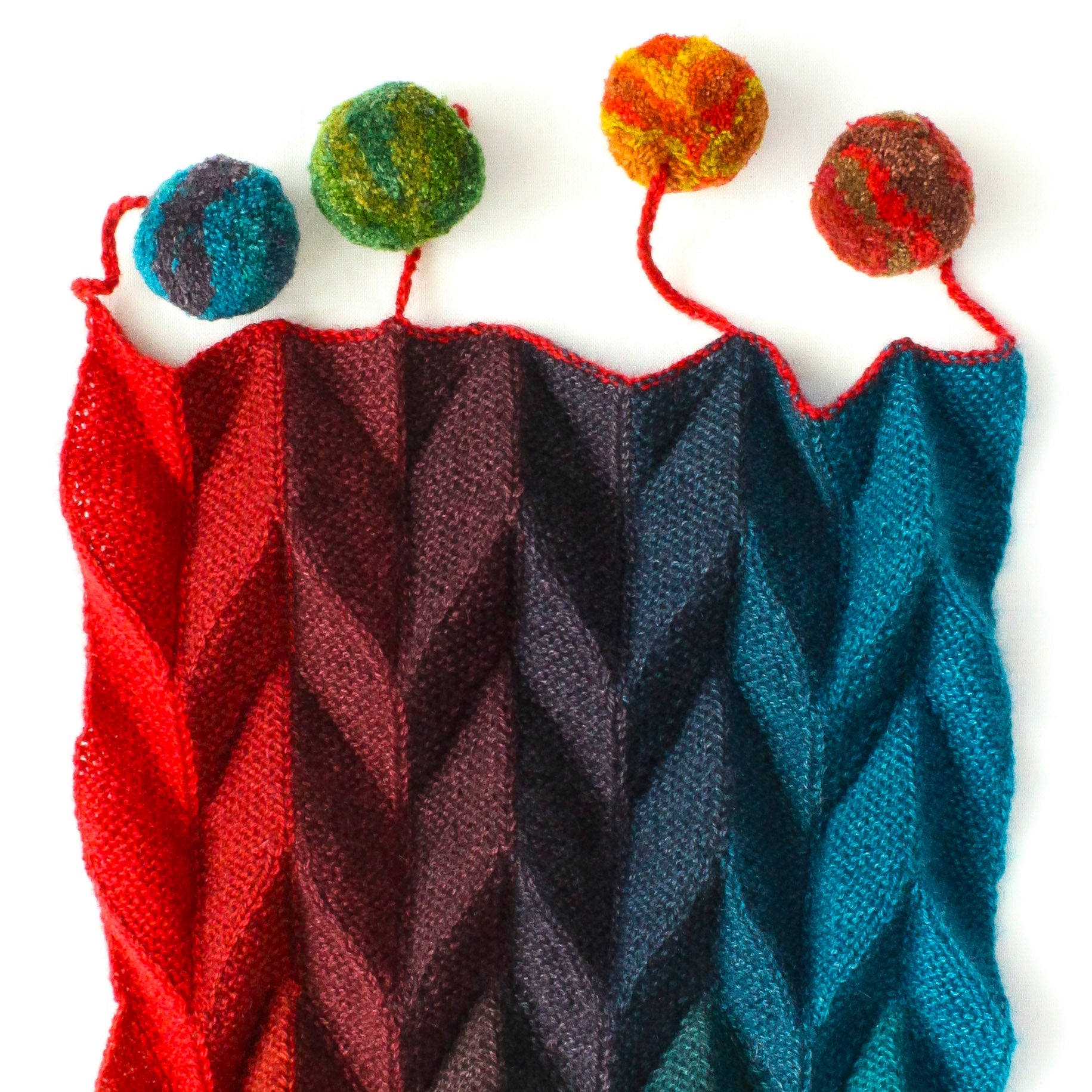shifting chevrons pattern
shifting chevrons pattern
Couldn't load pickup availability
a 3D intarsia scarf pattern
The Pattern
If we think of knitted fabric just like a sheet of paper, and we can fold sheets of paper into amazing shapes then we can fold knitted fabric too. Garter stitch is such a strong, static fabric with no desire to turn or twist in any particular direction. Stocking stitch columns (vertical and diagonal) want to turn the fabric, and I used this natural inclination to create folds.
The inspiration for this came from the Miura fold which forms a tessellated surface using parallelograms. It was invented by the Japanese astrophysicist, Kōryō Miura, designed to fold solar panels into a compact shape before launch which could unpack in one smooth motion in space.
This pattern uses garter stitch, stocking stitch and twisted stitches to create the fabric. Intarsia is used to manage colours. Difficulty level: advanced.
Materials
- a Colour Theory set (45 colours, 4g / 30m of each colour, plus a swatching colour to knit your gauge swatch with)
OR
- a heavy laceweight yarn that is around 750m (820y) per 100g in weight. You will need 45 different colours, and arrange them in a triangle as per the diagram on the right. Knit the gauge swatch pattern to check you have enough to complete the scarf.
I would recommend an animal fibre, rather than cotton, acrylic or a manmade yarn (like tencel or viscose) as animal fibres will stick to each other and hold the 3D shape better.
- a set of needles to get gauge. I used 2.5mm 80cm circular needles. You do not have to use circular needles.
If you’re using your own yarn, make sure your needles are fine enough to make a stiffer fabric. If the needles are too large, the fabric will be floppy and not hold the shape.
Size: length 162cm / 63.7in, width 24cm / 9.5in.
Techniques used: garter stitch, slipped stitches, twisted stitches, intarsia. Difficulty level: advanced.
Share
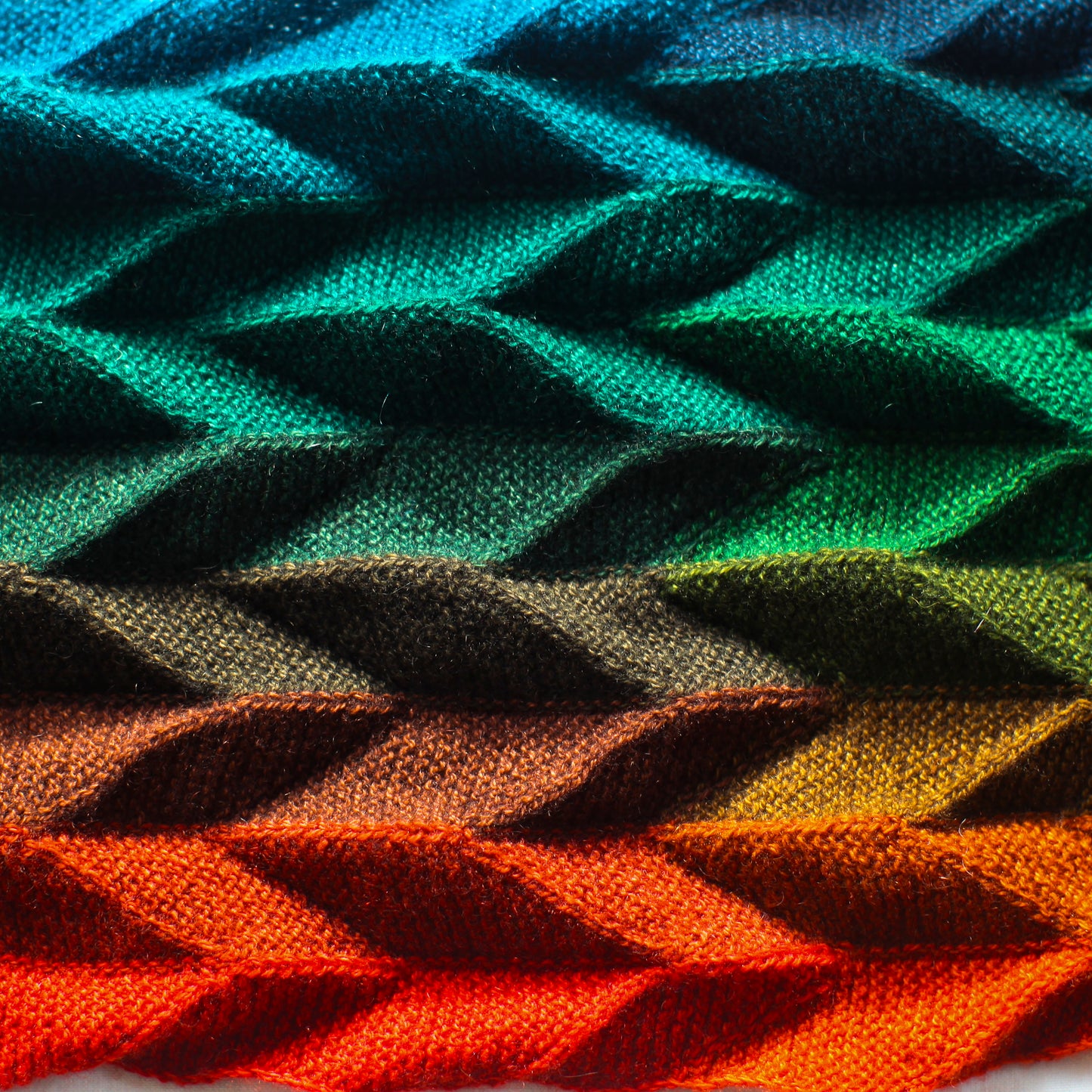




MAILING LIST
Subscribe to my newsletter for insider news, product launches, and more.

